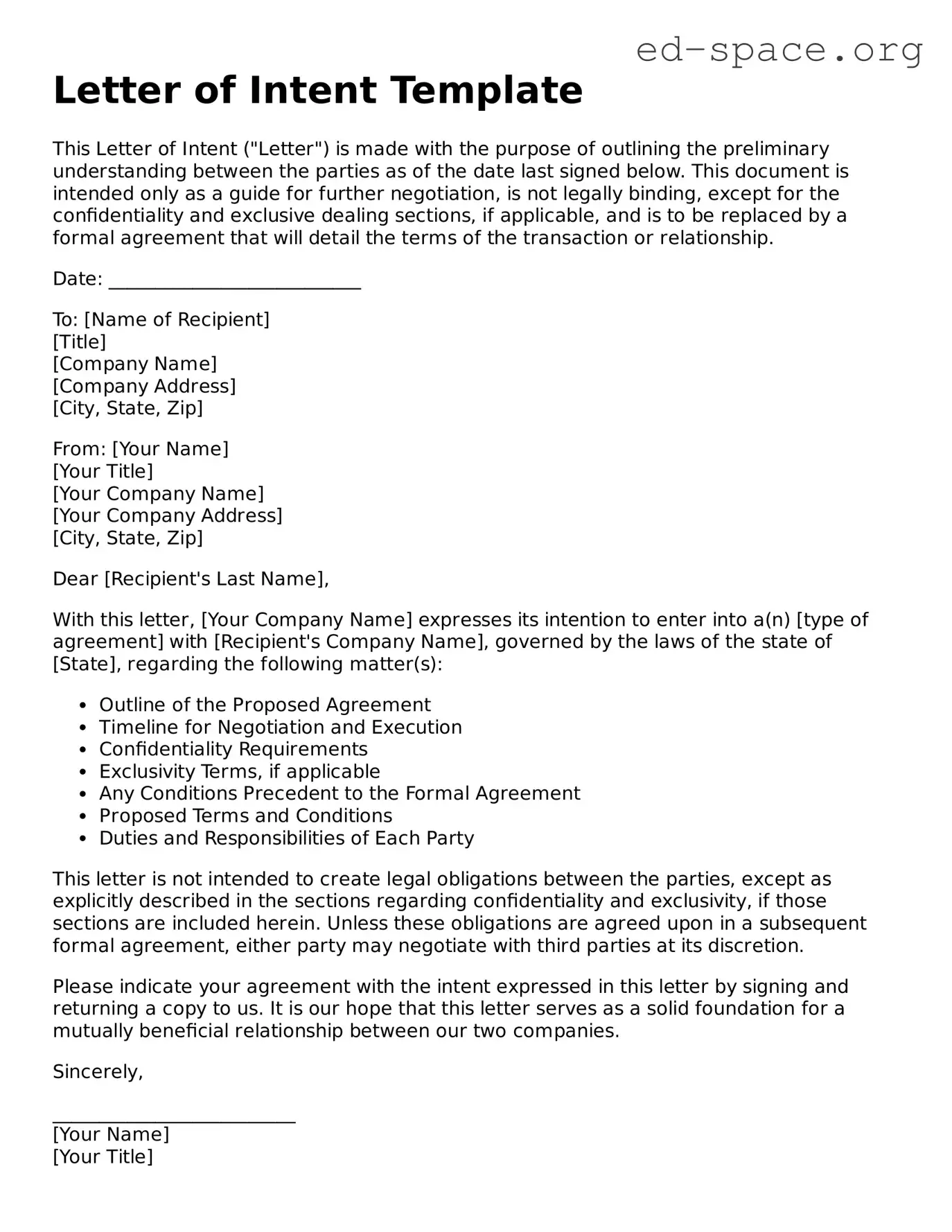Letter of Intent Template
This Letter of Intent ("Letter") is made with the purpose of outlining the preliminary understanding between the parties as of the date last signed below. This document is intended only as a guide for further negotiation, is not legally binding, except for the confidentiality and exclusive dealing sections, if applicable, and is to be replaced by a formal agreement that will detail the terms of the transaction or relationship.
Date: ___________________________
To: [Name of Recipient]
[Title]
[Company Name]
[Company Address]
[City, State, Zip]
From: [Your Name]
[Your Title]
[Your Company Name]
[Your Company Address]
[City, State, Zip]
Dear [Recipient's Last Name],
With this letter, [Your Company Name] expresses its intention to enter into a(n) [type of agreement] with [Recipient's Company Name], governed by the laws of the state of [State], regarding the following matter(s):
- Outline of the Proposed Agreement
- Timeline for Negotiation and Execution
- Confidentiality Requirements
- Exclusivity Terms, if applicable
- Any Conditions Precedent to the Formal Agreement
- Proposed Terms and Conditions
- Duties and Responsibilities of Each Party
This letter is not intended to create legal obligations between the parties, except as explicitly described in the sections regarding confidentiality and exclusivity, if those sections are included herein. Unless these obligations are agreed upon in a subsequent formal agreement, either party may negotiate with third parties at its discretion.
Please indicate your agreement with the intent expressed in this letter by signing and returning a copy to us. It is our hope that this letter serves as a solid foundation for a mutually beneficial relationship between our two companies.
Sincerely,
__________________________
[Your Name]
[Your Title]
Agreed and Accepted:
__________________________
[Recipient's Name]
[Recipient's Title]
Date: ___________________________
